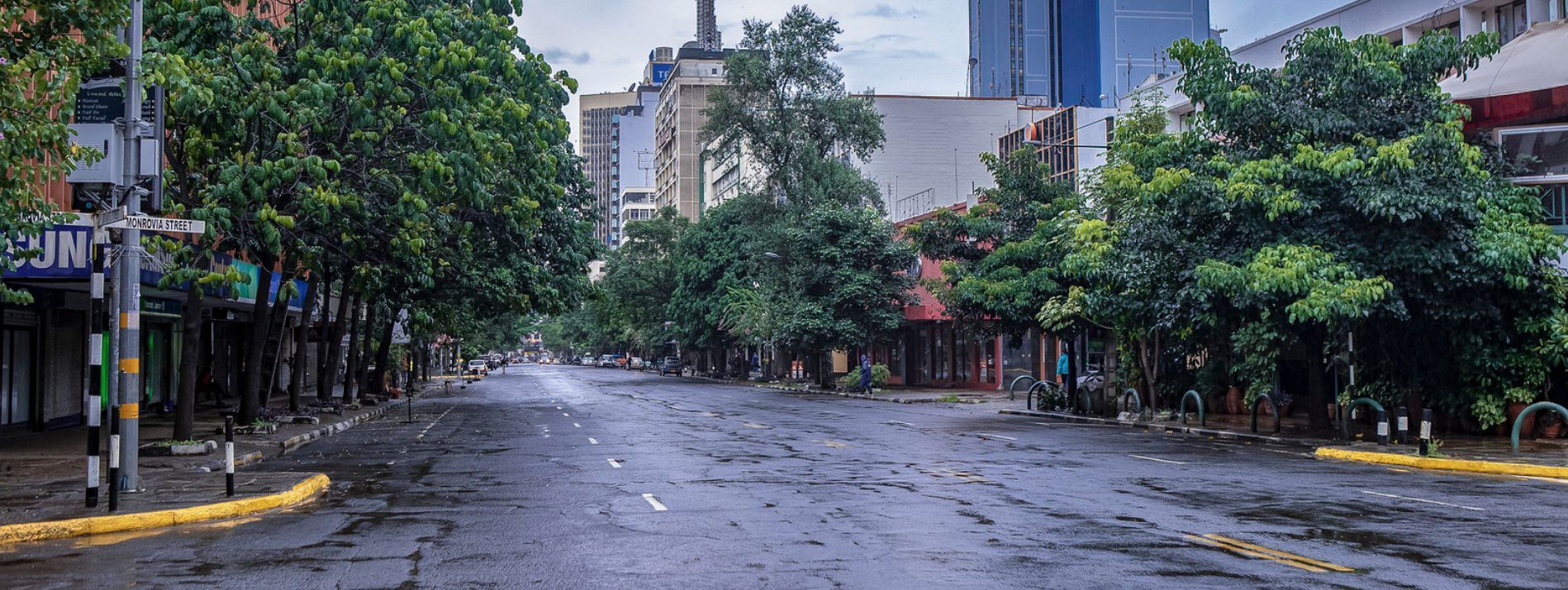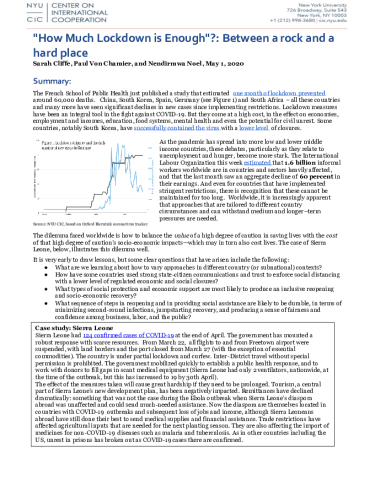Lockdown measures have been an integral tool in the fight against COVID-19. But they come at a high cost, given their impacts on economies, employment and incomes, education, food systems, mental health and even the potential for civil unrest.

This policy briefing by Sarah Cliffe, Paul von Chamier, and Nendirmwa Noel examines how countries are balancing the need for lockdown with policy measures to alleviate their effects and plans for reopening. It provides comparative data on the stringency of lockdowns, showing that while there has been a convergence towards more stringent measures over time, there is also wide variation among countries—even among those in the same region, or income group. A brief case study of Sierra Leone and snapshot examples of policy from ten other countries illustrates the range of answers to the question of how much lockdown is enough.
Download the full briefing here.

